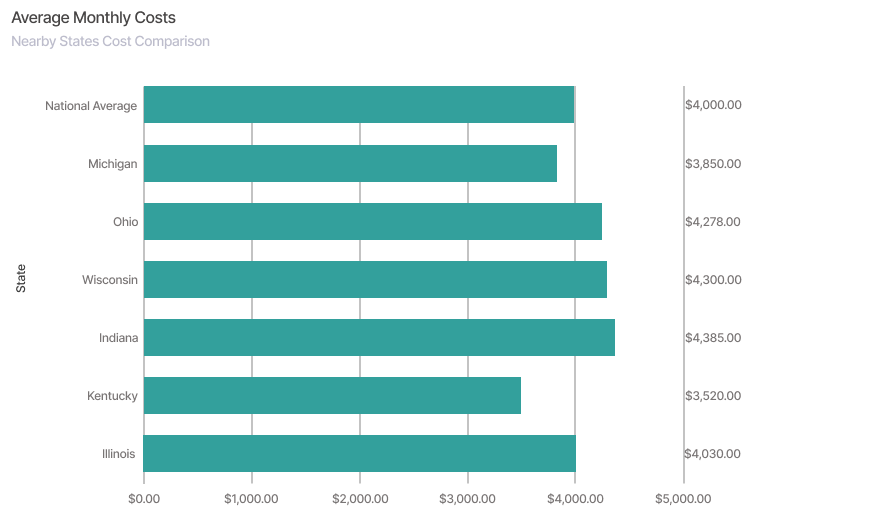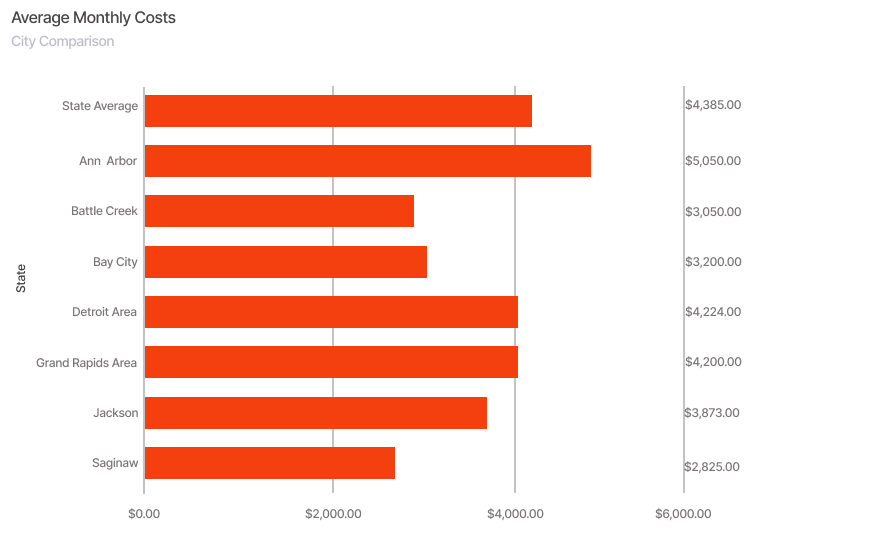With the arrival of the golden years, the prospect of elderly care becomes a significant consideration for individuals and families. While providing …
Assisted Living Options for Low-Income Elders
As people drift slowly towards old age, one concern that usually bothers them is: ‘Which form of assisted living to choose and how to pay for it?’ The need for suitable and affordable low income assisted living options becomes increasingly important with the onset of old age. Let’s shed light on the various assisted living options for low-income seniors, exploring both public and private resources designed to provide quality care. Looking into government assistance programs and community-based initiatives, we also understand that the range of options is essential for ensuring that our seniors receive the support and dignity they deserve.
By providing a comprehensive overview, we aim to empower families, caregivers, and low-income seniors themselves so that they can make informed decisions about the proper assisted living options that resonate with both their financial means and unique care needs. By the end of the page, we will also find out that the low-income assisted living options are not just havens of comfort and care, but they translate the idea of healthy aging into a tangible reality.
Pro Tip:
For top living facilities recommendations, enter your zip code and read our guide to the best assisted living facilities by city.

What is Assisted living?
As the name suggests, assisted living is a form of long-term care designed for seniors who need some help with their living and yet they don’t want to rely entirely on caregivers. Assisted living provides a homely environment where residents can receive support with tasks, like bathing, medication management, meal preparation, and housekeeping. The primary goal is to revitalize the seniors so that they start to live their golden years to the fullest.
Since assisted living is a very well-liked option among many aging Americans, it has various forms:
- Assisted Living Communities
- Subsidized Housing
- Home Care Services
- Adult Foster Care
- Continuing Care Retirement Communities (CCRCs)
- Memory Care
- Government Assistance Programs
- Residential Care Homes
- Assisted Living Apartments
- Senior Co-Housing
- Assisted Living for Veterans
- Respite Care
- Hospice Care in Assisted Living
- Technology-Assisted Living Solutions
- Intergenerational Living Communities

Statistics:
More than 818,800 Americans currently reside in unique care assisted living communities. That’s about 2% of seniors over the age of 65. There are over 30,600 active and affordable assisted living facilities over there.
Find the best Assisted & Senior Living options here
To learn more about our Assisted Living, submit the form below and we will directly guide you about everything that you want to know.
Who Qualify as Low-Income Elders?
By assessing financial resources, we can easily gauge the financial status of a person. Typically, low-income status is ascribed to seniors with limited financial means falling below set thresholds. So, if the income level for a senior’s county of residence ranges from, say, $15,000/year to $60,000/year, with $30,000 as the national median of this range, a senior who receives $24,000/year (80% of $30,000) would fall into the low-income bracket. However, the income levels change over time. Additionally, assets like savings, property, and investments are frequently evaluated to measure a person’s financial standing. Several national centers for assisted living, government programs, and other assistance initiatives, including Medicaid, Supplemental Security Income (SSI), and Supplemental Nutrition Assistance Program (SNAP), utilize these criteria to offer targeted support to low-income elders.
Assisted Living Costs for Low Income Elders
Financial Assistance for Assisted Living
A Dutch proverb says: ‘Cost goes before the profit’. The pay for assisted living is a significant factor that families must consider when exploring senior care options. The expenses associated with low-cost nursing homes or assisted living for senior vary widely based on factors such as location, the level of care needed, the room size, medication management, and the amenities provided by the facility.
According to Genworth Financial, the average monthly cost of the most affordable assisted living options in the United States in 2022 is $4,500. However, the cost can be greatly different from one place to another, with monthly average costs as high as $6,000 in the Northeast and as low as $3,000 in the Midwest. People with dementia can expect the cost of memory care to rise an average of $1,200 per month because of the additional staff and resources required.
Since many seniors can’t even afford the costs of low-income skilled nursing care, that’s why assisted living financial aid is needed such as Medicaid, Veteran’s Benefits, government lifelines, community support initiatives, and other non-profit organizations.
Since many seniors can’t even afford the costs of low-income nursing homes, that’s why assisted living financial aid is needed such as Medicaid, Veteran’s Benefits, government lifelines, community support initiatives, and other non-profit organizations.
Medicaid And Assisted Living
When it comes to government assistance, the first name that stands out is Medicaid. Medicaid is a joint federal and state program that provides health coverage to low-income individuals and families, including pregnant women, children, people with disabilities, and adults with incomes at or below 138% of the federal poverty level in expansion states. It covers various healthcare services such as doctor visits, hospital stays, prescription drugs, and long-term care.

Statistics:
As of 2020, Medicaid covered over 77 million Americans, serving as a crucial safety net for those who would otherwise struggle to access health care. Nearly one in five (18%) of residents relies on Medicaid to pay for daily care services provided by low income assisted living communities.
Pro Tip:
Medicaid is a federally-funded program for older adults over 65. Read our guide, Medicare vs. Medicaid, to learn about the differences between Medicaid and Medicare—two vital financial assistance programs for seniors.
Non-Profit organizations and Assisted Living
The journey of low-income assisted living should be peaceful and exhilarating for both our esteemed seniors and their family members, yet financial concerns can cast a shadow on this adventure. Beyond government aid, there exists a network of compassion-driven entities, such as nonprofits, grants, scholarships, and community organizations, which are dedicated to supporting low-income elders, ensuring that financial constraints don’t hinder access to a supported lifestyle.
Veterans’ Benefits and Assisted Living:
Veterans are those respectable seniors who have struggled all their lives with the hope that they will spend their golden years with dignity and comfort. For them, there’s a distinct avenue of support through Veterans’ Benefits. The Department of Veterans Affairs (VA) offers Aids and Attendance benefits, providing eligible veterans and their spouses additional financial support for assisted living or low-income nursing home care. We’ll guide you through the process of navigating these benefits, ensuring that those who have dedicated their lives to military service receive the respect and assistance they’ve earned.
To qualify for Veteran’s benefits, a veteran must meet one of the following criteria:
- Must have served in the active military.
- Need help with activities of daily living (ADL) such as bathing, dressing, and eating.
- Be bedridden.
- Reside in a long-term care facility due to mental or physical incapacity.
- Have severe visual impairments.
To apply for Veteran’s Benefits, contact your state’s Pension Management Center or visit your local regional benefit office. Since eligibility can vary depending on the state, you should contact your local VA benefits office to find out if your loved one qualifies.

Exploring Alternatives to Assisted Living
It is a fact that not everybody can afford assisted living, so that’s where the alternatives for assisted living come into play. Diverse options now cater to varying needs and preferences. The key lies in exploring these options, understanding individual needs, and even if you get a chance, you can embrace a personalized approach in the local area agency on aging. Here are some of the alternatives:
1. Residential Care Homes:
With a limited number of residents, these residential care homes possess all aspects of the ideal ‘Home’, providing an intimate environment for the seniors to learn and socialize. Trained caregivers offer help with daily activities while infusing a sense of community among residents.
Did You Know:
Residential care homes are also known as adult care homes or single-family residences that offer care to older adults and seniors with disabilities. Read this guide to Adult Care Homes to learn about the benefits of personalized care and a smaller facility.
2. Assisted Living Conversion Programs:
For those who wish to remain in the comfort of their own homes, assisted living conversion programs come to the forefront. These initiatives provide in-home support services, allowing seniors to age in comfort, while maintaining their independence.
3. Home Care Services:
Home care services bring professional caregivers into the homes of seniors to provide personalized assistance. From help with daily tasks to companionship, home care allows individuals to maintain their routines and familiar surroundings while receiving the support they need.
Pro Tip:
If you’re looking for alternative housing options to assisted living facilities, check out options that help you age in place at home. Read this guide: Alternatives to Assisted Living.
How to find the best low income assisted living option
Choosing the right low income assisted living option is a journey that combines practical considerations with heartfelt emotions. It’s a decision that involves embracing change while still maintaining independence. Take the time to assess needs, visit facilities, seek out recommendations, and then start by conducting a comprehensive assessment of the financial resources available, considering income from various sources, such as Social Security, pensions, and other forms of earnings. Evaluate assets like savings, property, and investments to gain a holistic understanding of the financial standing. Research different types of assisted living facilities, including subsidized housing, residential care homes, and government assistance programs. Explore community-based initiatives and non-profit organizations that offer support to low-income elders. Utilize online resources, reviews, and recommendations to gather insights into the quality of care and services provided by various facilities.
Once you have done that, set meetings with local senior care experts or social services agencies that may have valuable information and guidance. Finally, prioritize visits to affordable assisted living facilities, observe the environment and interactions among residents and staff, and the overall living conditions. This careful approach ensures that the chosen low income assisted living option aligns with both financial constraints and the unique care needs of the seniors involved. By choosing the right assisted living facility, you’re not just finding a place to live in; you’re finding a new community, and the opportunity to create wonderful memories.
Summarizing the Discussion
Having shed light on the intricate landscape of low income assisted living, we also need to address the fact that it is more than necessary to consider the financial aspects of choosing any of the options. The need for affordable senior care alternatives is magnified as time unfolds, prompting a closer look at both public and private resources designed to provide quality care for low-income elders.
Assisted living contains diverse options, each option being a unique thread woven into the rich tapestry of low income assisted living, providing a spectrum of choices for seniors. A snapshot of statistics reveals that over 818,800 Americans reside in assisted living communities, constituting about 2% of seniors over the age of 65. Additionally, there are over 30,600 affordable assisted living facilities, reflecting the prevalence and importance of assisted living as a vital option for aging seniors.
Financial considerations are thoroughly addressed, emphasizing that costs of assisted living options vary, based on location, level of care, and amenities. Average monthly costs are detailed. When it comes to assisted living, financial help from the government through Medicaid emerged as a crucial lifeline and long-term care insurance for low-income elders, with approximately 18% of residents relying on Medicaid for daily care services. The compassionate support provided by nonprofit organizations beyond government aid is highlighted, ensuring that economic constraints do not hinder access to a comfortable and supported lifestyle. For veterans who have dedicated their lives to service, veterans’ benefits offer distinct avenues of support, aligning with specific criteria related to military service and assistance needs. Even in the worst scenario, a senior can utilize the funds from the reverse mortgage to pay for assisted living services. In exploring alternatives to assisted living, including residential care homes, assisted living conversion programs, and home care services, this guide empowers families and seniors to make informed choices tailored to their unique preferences and financial means.
In short, each choice, from the warm embrace of assisted living communities to the intimate havens of residential care homes, is a brushstroke in the masterpiece of healthy and graceful aging. The senior can find support in government aid and nonprofit support agencies. In short, as the saying goes: ‘Assisted Living is almost like a love letter to our dear seniors’. It’s a world of joy, an opportunity to celebrate, create, and connect within the embrace of exceptional care, comfort, and love.
Cost-saving strategies for senior care
As the golden years knock at your door, the prospect of finding affordable assisted living options kicks in as an urgent worry …
In the intricate network of community care, the wires of volunteer-based senior support programs weave human connections that transcend generations. These initiatives, …
In the intricate garden of social welfare, state-specific assistance programs emerge as diligent gardeners, ready to address the unique needs and challenges …
In the realm of compassion and community support, charitable organizations are unbeatable, standing out as strong pillars of hope, and extending a …
In the vast and complicated landscape of senior care, non-profit assisted living facilities emerge as beacons of compassion, prioritizing the well-being of …







